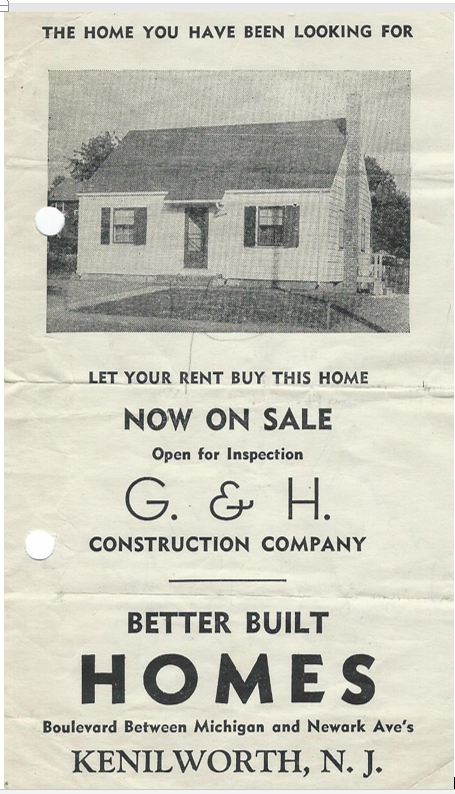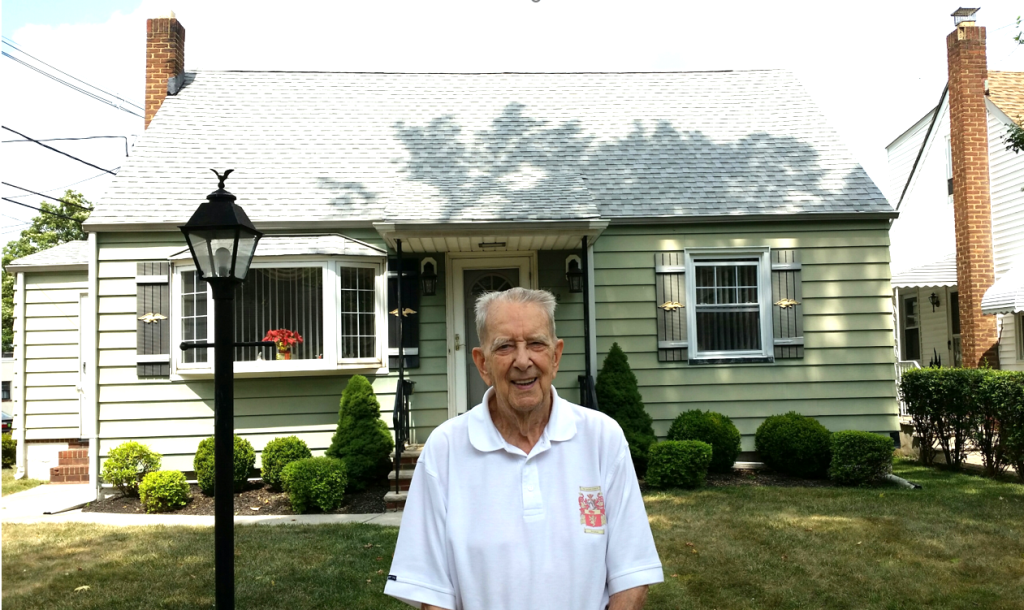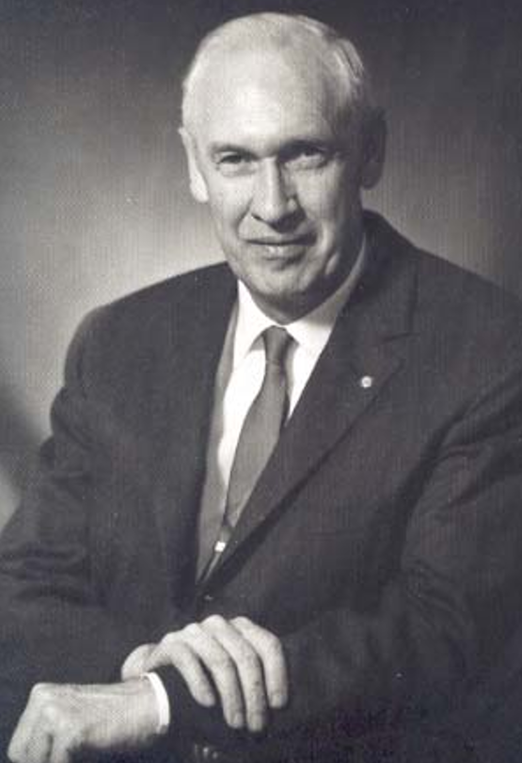
602 Kington Ave. (1947-48)
What, where, when in Old Kenilworth –
Discovering Kenilworth’s “model homes,” Part 6
Last article readers were promised to learn where the Oak Knolls section of town was located and the name of a visionary planner. The planner was Harold B. Snyder (1908-1979) who in the 1930s lived with his family on S. Michigan Ave. He owned W. D. Snyder Co., at the corner of Fairfield Ave. He carried out a plan to develop the industrial area between Fairfield and Colfax avenues. He envisioned affordable homes to attract workers for the industries and a new Uptown shopping area with Kenilworth’s own supermarket. To build the homes he linked up in the late 1940s with George and Harry Butts of G&H construction. In 1949 Snyder erected the colonial style shops on the north side of the Boulevard from N. 19th St. to nearly N. 21st St. Residents were jubilant to have a real supermarket in town. In the 1960s he founded the Kenilworth State Bank, now Wells Fargo.
So where is Oak Knolls? Working together, these men built over a hundred homes along portions of streets between the west side of Michigan Ave. to Orange Ave. These included portions of Kingston, Clinton, Monmouth, Newark, Passaic, and Quinton avenues; S. 23rd, S. 24th, and S. 25th streets. G&H used Oak Knolls and Oak Hill to describe their homes and Snyder used Orchard Homes. All were 4½ room Cape Cod style houses, 24 ft. X 30 ft., on generally 50 ft. X 100 ft. lots. Snyder built a few colonials on Passaic Ave. near Michigan Ave.

Frank Bresnahan (1915-2017), recalled in 2015 as a 100-year-old original owner, “My wife, Edna, and I bought a new house on Kingston Ave. It was built by the Butts brothers. We put down $25 to buy the house which cost $9,400. We moved in and the street was not paved yet so we had to keep the windows closed in the summer to keep the dust out!” The Bresnahan home was a model home and depicted in the sales brochure. Their annual taxes then were $144.
Grace Brasser (1933-2011) of 144 S. Michigan Ave., stated (2003) that for these homes her husband’s grandfather – John Brasser (1876-1958) – was the sales agent. “He used to take a deposit of just $25 to hold a house for someone until they came up with the $200 down payment that was needed. Catherine Stollen (1926-2022), an original owner of 532 Quinton Ave., recalled (2015) the homes selling for about $9,000, with choice of coal or oil heat. “Harold Snyder built our house. My late husband, Walter, and I were the first owners and moved here in 1948. It cost $8,900. It was a basic house. The houses came with a coal furnace. An oil burner was more money; an extra window in the attic – more money; anything different – no matter how small – more money. Our first mortgage payment was $49 a month.”

Many Oak Knolls homes have been greatly expanded. Online sales data indicate that basic Cape Cods have been selling in the $500,000 range compared to $9,000 back in 1948.
Next article learn about “Boom Town” credited with getting Kenilworth government out of its financial hole created by the Great Depression.
Research provided by Walter E. Boright, Ed. D., historian, and Historic Signs, Inc. Persons with inquiries about this or other Kenilworth history topics may contact Dr. Boright at drbori@aol.com or 908-256-5200.
